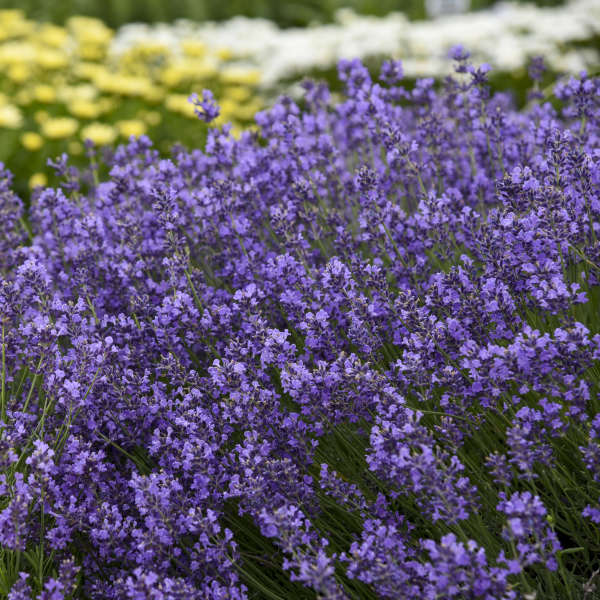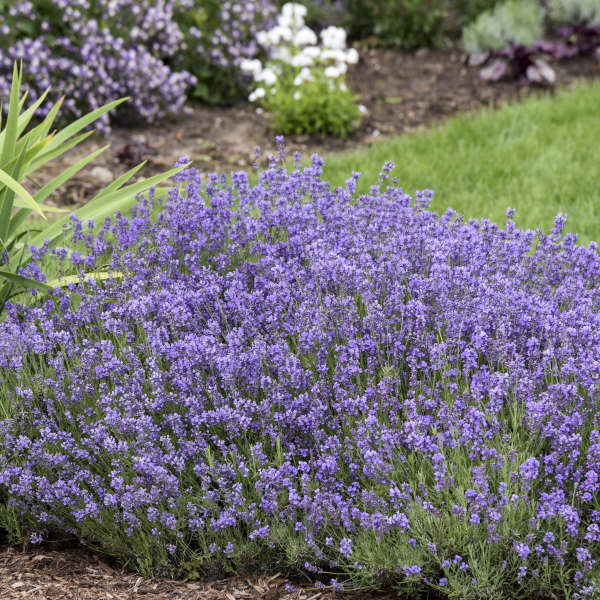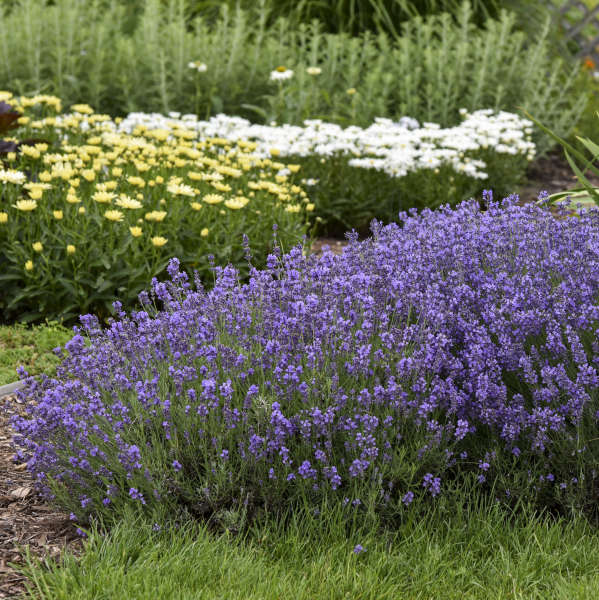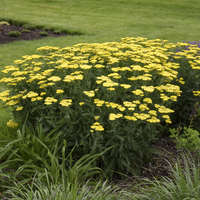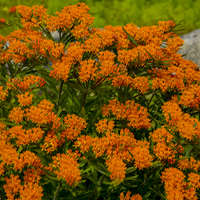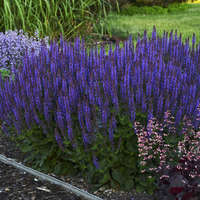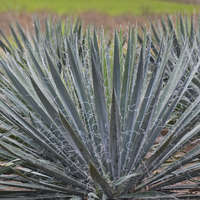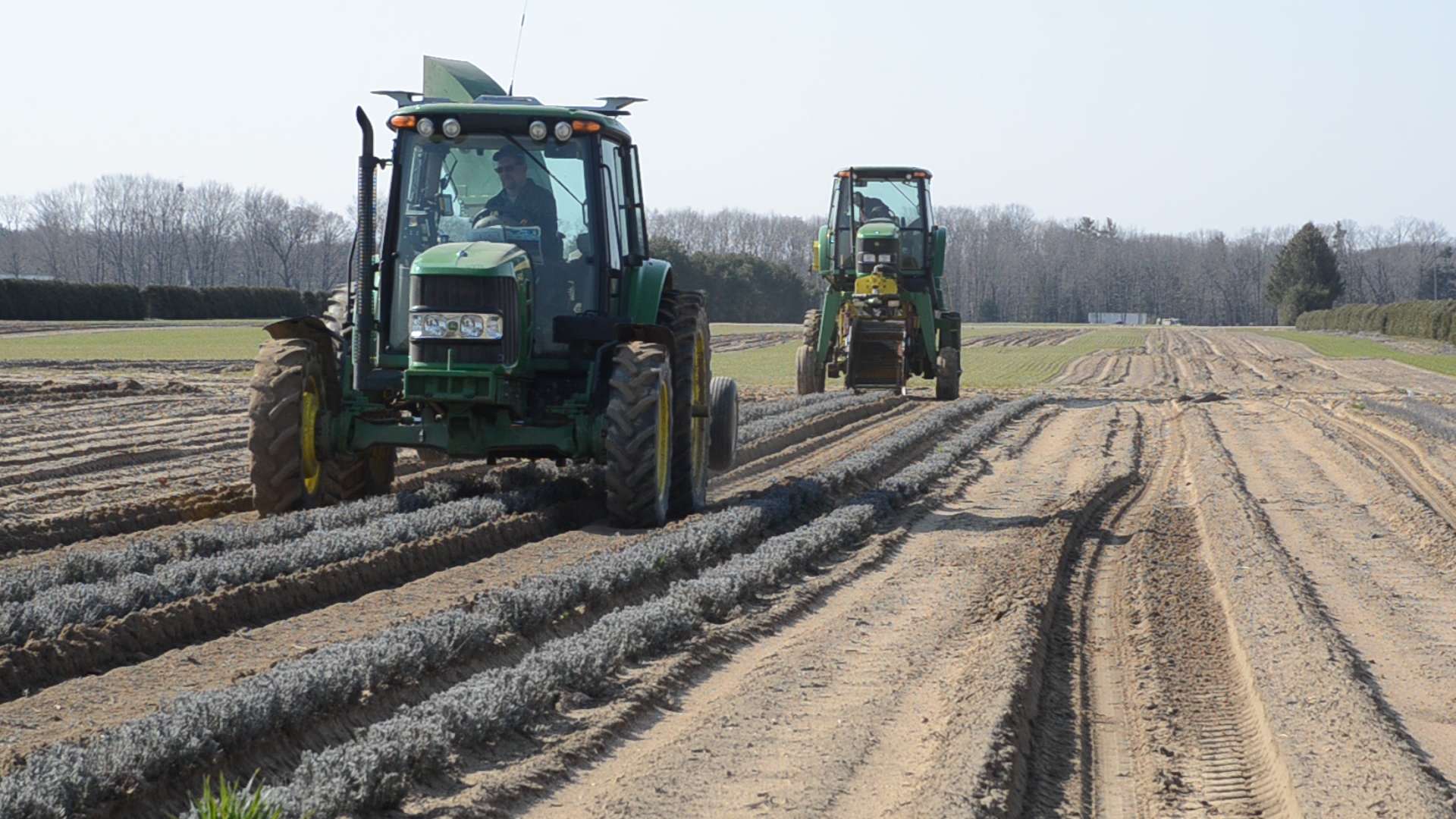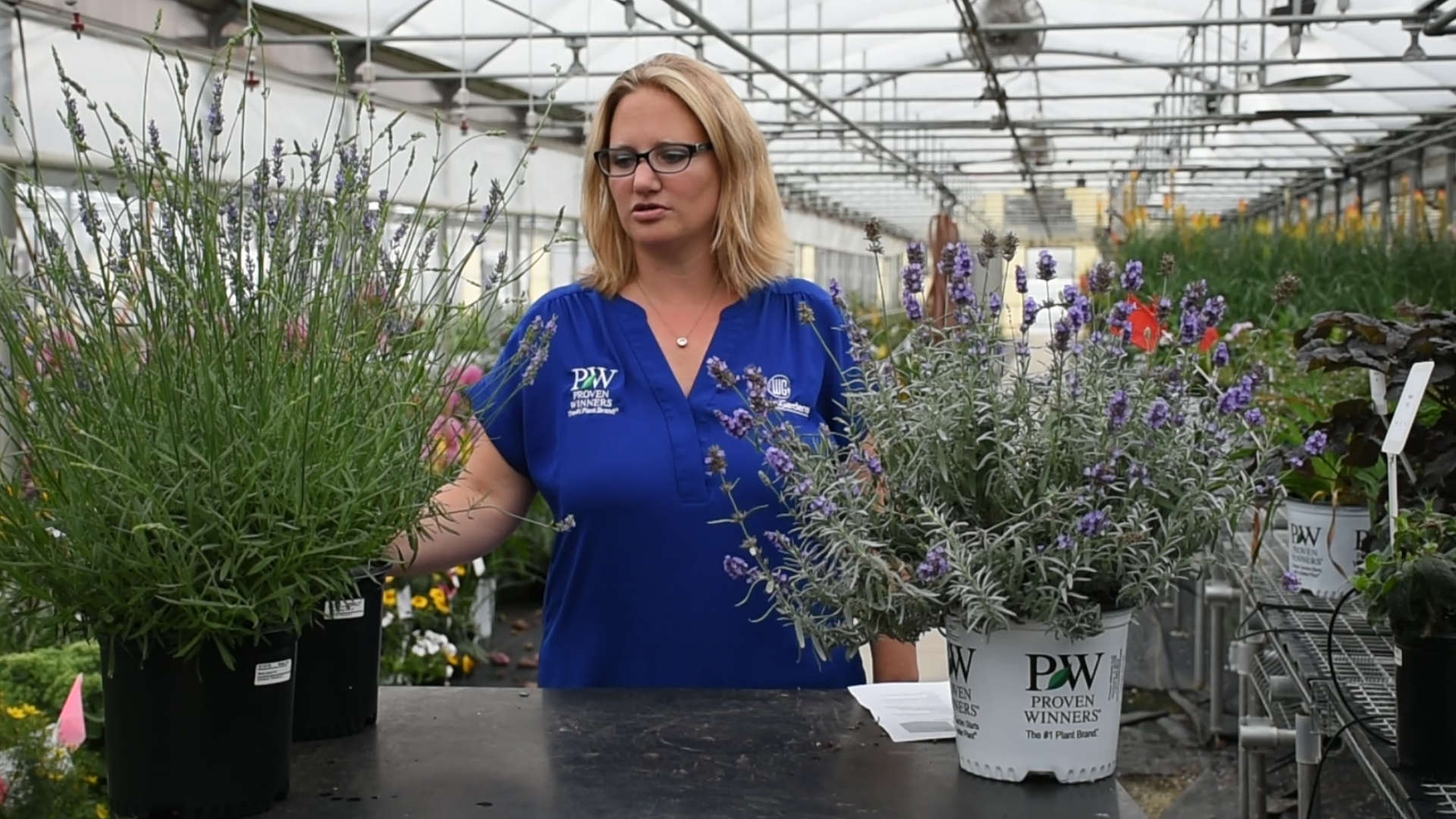Lavandula angustifolia 'Munstead'
Common Name: English Lavender
Rich lavender flower spikes fill the air with their sweet, intoxicating fragrance all summer long. Though this cultivar was introduced to the trade in 1916, it remains one of the most popular today. Its compact habit and relatively short stature makes it a good choice for edging. This is often said to be the hardiest variety of all Lavender. It is very similar to 'Hidcote'.
Lavender has been grown for centuries for its intensely fragrant flowers and beautiful appearance. It is a staple item of every sunny garden, and its dried flowers are widely used in potpourris and arrangements.
